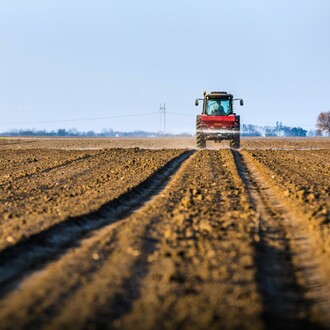Who is responsible for soil conservation in Alberta?

Soil conservation efforts in Alberta date back nearly 100 years. The Soil Conservation Act was developed in response to wind erosion in the 1930’s that created dust storms and blew away precious topsoil. While there have been changes and amendments to the act (the original act was the Control of Soil Drifting Act in 1935), who is responsible for soil conservation remains the same – landowners.
Section 3 of the Act states:
“Every landholder shall, in respect of the landholder’s land, take appropriate measures:
(a) to prevent soil loss or deterioration from taking place, or
(b) if soil loss or deterioration is taking place, to stop the loss or deterioration from continuing.”
The responsibility of enforcing landowner action falls to the individual municipalities.
Guidance for municipalities on enforcing the Soil Conservation Act is available in the Agricultural Service Board Act. Under the Act, Municipalities can create an Agricultural Service Board that, with the Municipal district council, can appoint an agricultural fieldman to act as a soil conservation officer. This officer is responsible for enforcing soil conservation in the municipality.
Some municipalities have taken significant action to raise awareness. Notably, Newell County, the MD of Taber, the County of 40 Mile and Lethbridge County campaigned to bring attention to soil health in 2021 with a series of articles published by Farming Smarter.
But education, resources and enforcement vary greatly across municipalities. Some have chosen to enact bylaws while others have not and since the Soil Conservation Act delegates responsibility to the municipalities, the provincial government has little involvement in municipal action. However, this may be a good thing.
Newell County Director of Agricultural Services, Todd Green referred to the Act as “enabling legislation” which means that different municipalities can take different approaches to meet their specific needs.
And indeed, Alberta is not a small province so enacting blanket soil health policies across all municipalities without accounting for variation in soils may not be very effective.
Environmental sustainability researcher Sukhwinder Singh emphasizes the importance of treating different soils based on specific needs.
“You have low rain somewhere, you have high rain somewhere, somewhere is dark soil, somewhere is gray, somewhere is not very good, somewhere it is very with high organic matter – so it depends,” he says. “You cannot give one sentence or one type of policy to everyone, you know?”
This approach has worked well for some municipalities, but drought conditions have increased the risk of soil erosion in Alberta and therefore, increased the need for the adoption of conservation practices by landowners.
Landowners are going to need access to services and information in order to take the necessary steps to mitigate erosion and hopefully municipalities will step up and provide the necessary resources.
Additionally, financial incentive offered by the government has proven to be an effective way to encourage landowners to adopt conservation practices.
Alberta Land Institute's ”Community Resource Guide: Sustainable Healthy Soils in Alberta” by Sukhwinder Singh offers a great beginner level education on soil health. You also listen to ALI’s podcast episodes and watch the YouTube video on soil health.